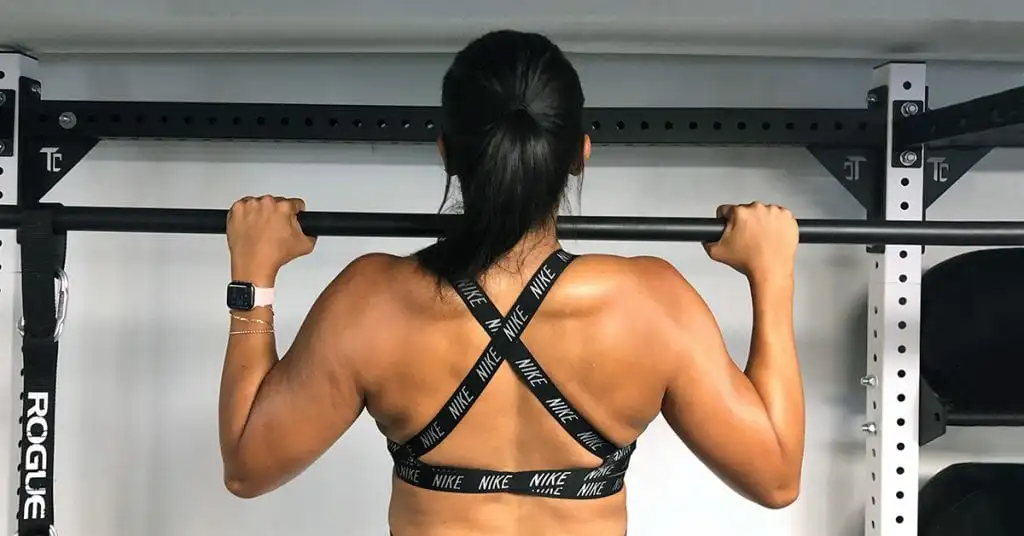Best Workout To Improve Vertical Jump

For players in various kinds of sports, having an outstanding workout to improve vertical jump may mean the difference in victory and defeat. If that you're an athlete trying to dunk, a volleyball player wanting to attack the net, or just somebody wanting to get better at their sports, having the capacity to jump higher is important.
Yet, raising your jumping frequency won't help you have a higher vertical leap. It is essential to follow a purposeful instructions regimen which emphasizes strength, power, explosiveness, and technique. The best exercises for raising vertical leap will be discussed in this post, along with tips on how to optimize your efforts and produce results that you can see.
Best Workout To Improve Vertical Jump
Before we start our exercise everyday life, let's look at the significance of the vertical leap. One popular athletics test used to assess strength in the lower body is the vertical leap. It strengthens the tissues in your legs, thighs, and core, which may significantly improve your overall athletic ability. But exactly do you maximise the potential you have? That's when targeted training to raise vertical leap becomes useful.
Read also: 20 Minute Cycling Workout Challenge
The Science of Vertical Jump
It's crucial to comprehend the principles underlying your vertical leap if you want to increase it. A vertical leap entails:
- Strength: The capacity to raise yourself off the floor comes through the muscles in the legs, specifically those of the glutes, thighs, and calves.
- Explosiveness: Utilizing only strength won't enable you to workout to improve vertical jump. You also need powerful explosiveness, that's an amalgam of speed and force output.
- Flexibility and Mobility: Having an appropriate amount of movement in the hips, ankles, and knees allows you to execute more effective jumping methods.
- Technique: Leap using the right technique, which involves arm swing and alignment of the body to get the best lift.
The Best Exercise Program for Increasing Vertical Leap

For optimal effects, try adding these workouts to your regimen at least three times a week.
1. Practice Plyometrics
Exercises called plyometrics are intended to increase explosive power and speed. These workouts simulate the explosive aspect of leaping with swift, forceful motions.
- Box Jumps: This workout increases explosive power and leg strength. Start with a platform or box that is knee-height approximately. Place yourself in front of the box, bend slightly, swing your arms, then leap skyward, gently landing on the box.
- Step off a platform: (such as a plyometric box) and perform a depth jump. As soon as your feet touch the ground, make the highest possible jump. Reactive power is improved by this workout, which is essential for increasing vertical leap.
- Lateral Bounds: By increasing coordination, balance, and speed through these single-leg from side to side jumps, a larger horizontal leap may be achieved.
- Tuck Jumps: Jump as far as you can with a width of your shoulders across your feet, pulling your knees up to your torso. The exercise below improves you jumping mechanics and develops explosive strength.
2. Exercise for Strength
Having a solid base is essential for any exercise aimed at increasing vertical leap. Increasing the strength of your core and legs muscles will help you jump with greater force.
The groundwork of lower-body strength preparing is the squat. They focus on the muscles utilized in hopping, including the calves, hamstrings, quadriceps, and gluts. You can crouch your body weight or add weight to increment obstruction.
The proper way to squat:
- Make sure your feet are separated by shoulder-width.
- Bend your back as if you were seated in a chair, placing your knees bent behind your toes.
- Push through your heels to go back up to an erect position.
- Perform four sets of ten to twelve reps.
Lunges Since lunges strengthen each leg separately, they are helpful in building bilateral power, which is essential to jumping. Step-Ups Step up with one leg and drive the opposing knee upward while using a solid box or bench. Your balance, coordination, and leg strength all increase with this exercise.
Read also: Core Circuit Workouts: Your Path to a Stronger Core
3. Fundamental Instruction
To convert the force produced by your legs into an explosive leap, you must have a strong core. A stronger core also guarantees improved stability and control during the exercise.
- Planks: A classic core workout that develops the entire intestinal and develops the lower backwards, the oblique, and abs.
- Russian Twists: Sit on the ground with your legs bent, lean back a little, and twist side to side whilst holding an object of weight or medicine ball. It tones the abdominal muscles and strengthens the core.
- Leg Raises: Raise your legs gently and keep their unity when laying flat upon your back. If you do this, your lower abdominal muscles, which are vital to preserving the body's a balance throughout a leap, may enlarge.
4. Exercises for Flexibility and Mobility

Your body is flexible and elastic across its entire spectrum of motion, which can greatly increase your vertical leap. Include these in the way you train to boost your vertical leap:
- Bending downward: with one knee and hitting your hips forward will stretch your hip flexors. When you leap, these muscles serve to raise your legs.
- Exercise for Ankle Mobility: Sitting on the knees and your toes under you, bend back and stretch your ankles. Improved form during jumping is made possible by a more flexible ankle.
- Dynamic Stretches: Warm up your muscles and increase your amplitude of movement with dynamic exercises like leg fluctuations, higher the knees. They and butt kick before starting any high-intensity exercise.
5. Powerful Lifting Motions
Expanding weight exercises assist your muscles produce force swiftly, which is required for boosting the altitude of your horizontal leap.
Strong Cleansing: Power purifies are a full-body exercise that promotes powerful power in the legs, hips, and core. It is one of the best exercises for boosting your vertical leap.
How to carry out a deep cleaning
- Place the barbell on the ground to begin.
- Place the barbell just outside your knees while maintaining a shoulder-width distance between your feet.
- Stretch your legs wide and bring the bar to your chest so that it lands on your shoulders in a single, forceful movement.
- Work with moderate to heavy weight for 3–4 sets of 3–5 repetitions.
Jump Squats: Perform a squat and then leap skyward while holding a barbell on your shoulders or dumbbells in your hands. Strength and explosiveness come together in this, which is ideal for increasing one's vertical leap. You may also read this: Strength Training Exercises For Seniors
How to Work out Better to Increase Your Vertical Jump

To maximize the advantages of this training schedule for improving workout to improve vertical jump , keep the following tips in mind:
- Rest & Recovery: After doing exercises that target a single muscle category, give your muscles at least 48 hours off. This will facilitate muscle healing.
- The Secret Is Consistency: You won't get better at jumping higher vertically overnight. It requires perseverance and commitment. You will see benefits if you follow your plan and monitor your development.
- Prioritize correct: form and technique over speed when performing each exercise. This guarantees that you are using the right muscles and preventing injuries.
- Gradual Progression: Raise the weight or level of difficulty progressively as you become stronger and more accustomed to the workouts. Progress is necessary for ongoing development.
Monitoring Progress
It's critical to keep track of your development as you complete this exercise to increase your vertical leap. Measure your present vertical leap to get started. Evaluate your jump height every few weeks and record any progress you make. Tracking your strength improvements in essential exercises like box jumps, deadlifts, and squats is also a good idea because these are markers of your advancement toward a greater vertical.
Conclusion: Best Workout To Improve Vertical Jump
To reach your full sporting potential, a well-rounded workout program that increases vertical leap is essential. Combining plyometric training, weightlifting, core training, mobility drills, and forceful lifts can assist you increase your vertical leap considerably. If you want to get stronger on the court, become more agile in athletics, or just be more athletic overall, these daily habits can help you achieve your objectives.
Recall that consistency and patience are essential. Continue with the program, give your body the right nutrition, and track your advancement. You'll eventually be performing better and jumping higher than before!
FAQ's: Best Workout To Improve Vertical Jump
Can I practice my vertical leap every day?
Yes, leaping more frequently will improve your vertical jump; but, you must carefully plan your volume and intensity so that your body has time to heal.
Which weights are best for higher jumping?
For this exercise, dumbbells held at the side or a barbell at the hang work well since they offer good balance. With jump squats, you just need to use weights that are heavy enough to load your jumps but light enough to allow you to explode upward.
Does doing a vertical jump speed up?
Generally speaking, athletes that can jump high can also run quickly. You may observe the lightning-fast 40-yard times that go along with standing vertical jumps of 40 feet or more at any NFL combine. Both sprinting quickly and leaping high need for a significant amount of explosive force.
Is there anyone who can grow more vertically?
Your vertical leap will rise as long as you can enhance your power-to-weight ratio and use your flexibility to get into the right position to jump. You can accomplish those goals with a variety of regimens and exercise variants. The key is to choose a regimen and follow it religiously.





.webp)